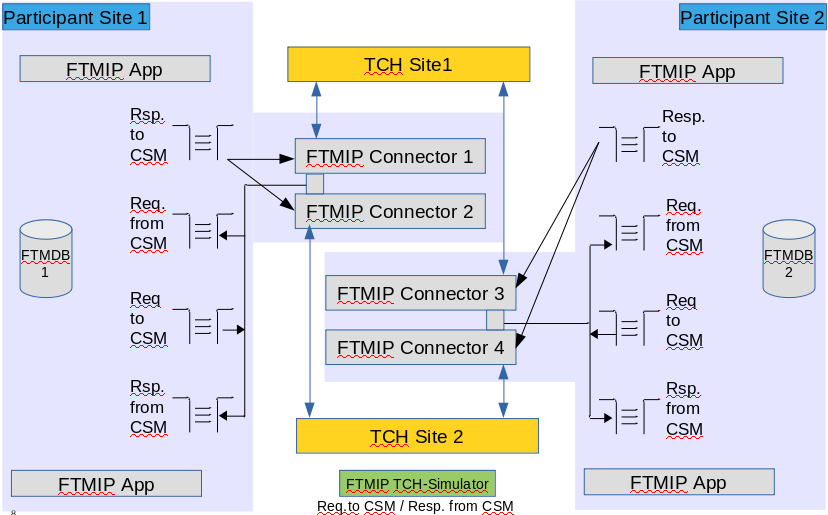Integration with the FTM IP payment application
This information provides an overview about how the TCH connector component interfaces with the FTM for Immediate Payments TCH application.
The FTM IP TCH connector is implemented as an IBM® Integration Bus message flow. This flow processes payment and non-payment messages to and from the FTM IP TCH application and the TCH IBM MQ environment that is provided to the participant. Messages such as Echo, SignOn, SignOff, and System Notification are entirely hidden from the FTM IP application, and the connector performs all required work flows for exchanging these administrative messages.
Messages that the connector receives from the FTM IP application are enriched with signatures, which are part of the application headers, before they are passed to TCH. For messages that are received from TCH, a signature validation might be requested in the configuration of the connector. The signatures are optionally removed before the message is passed to FTM IP for its actual processing.

- Participant site 1 to TCH site 1
- Participant site 2 to TCH site 1
- Participant site 1 to TCH site 2
- Participant site 2 to TCH site 2
- FXR.IP.REQUEST.TO.CSM
- FXR.IP.REQUEST.FROM.CSM
- FXR.IP.RESPONSE.FROM.CSM
- FXR.IP.RESPONSE.TO.CSM_1
- FXR.IP.RESPONSE.TO.CSM_2
- FXR.IP.RESPONSE.TO.CSM_3
- FXR.IP.RESPONSE.TO.CSM_4
The FTM IP connector uses the IBM MQ request-response protocol to make sure that the FTM IP application sends any response message to the same connector instance that the request came from.
The connector flows can be deployed in the same execution groups that the FTM IP application is deployed to. Specific performance and scalability requirements might indicate that you need to create multiple execution groups within IBM Integration Bus. For example, you might need to create multiple execution groups that contain only FTM IP application instances and also multiple execution groups for running TCH connector instances only. The FTM IP installation has sample scripts for the TCH connector that you can use to configure and generate four connector instances and the related Integration Bus BAR files.